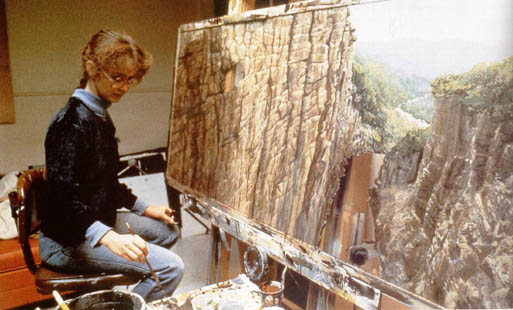Sam Taylor Wood
She is a contemporary artist who focuses working in video/installations and photography. Her works on videos, photographs and installations depict human emotions and reactions such as solitary, awkward or vulnerable moments and express it through camera.Still Life by Sam Taylor is known as one of the most classical work in contemporary art genre. However, what I didn't know was that it is based upon a particular type of still life painting that developed during the 16th - 17th centuries in Flanders and Netherlands. It is part of classical genre that contains symbols of change or death as a reminder of their inevitability. Its focus was upon confronting the vanity of worldly things through often subtle signs of elapsing time and decay.
Decomposition and progression.
These two key settings are what makes this video meaningful and able to express a story to audience. The display of fruit (or rabbit), which soon transforms within a matter of second, into a decaying, perishing objects. Presented in a loop, this set of endless repetition, where life and death acquires endless appeal.'S.T-W. - For me, as you look at this bowl of fruit, I feel that it becomes even more beautiful as it decays and as it goes into sort of nothingness. You still have the memory of the beauty and the grace of the passing of time I suppose. And it is also the fact that as you progress through life and you’re getting older and feeling the brutality of the passing of time, it’s nice to be looking at the gracefulness in that.'
What I didn't notice until the end of the film was the ball point pen next to the fruit basket while decomposition of fruits/rabbit continues. Why specifically a ball point pen to be lied next to these decaying objects?
Fascinating fact which could be immensely useful towards to the project is the repetition/rotation of certain cycle, learned from this Sam Taylor's video, 'Still Life'.
[Still Life by Sam Taylor Wood]
[A little death, Sam Taylor Wood]
The video below is the original thought of still life painting which requires human reaction and progression of the painting. The ending will be shown with finished painting with hyper-realistic painting which appears to be alive.
[Old master style still life painting time lapse demo]












